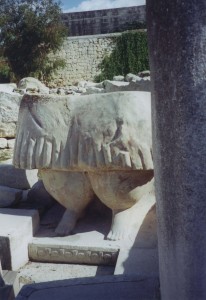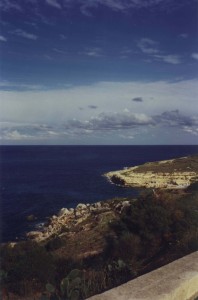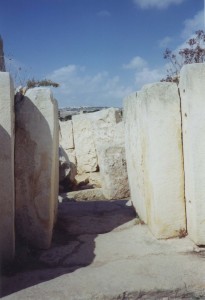Malta: A Small Island with a Vast History
 At a mere 316 square kilometres, surrounded by the blue waters of the Mediterranean, Malta may pack in more history per square inch than almost anywhere else you could name. And the remnants of these tens of thousands of years of history can still be seen today.
At a mere 316 square kilometres, surrounded by the blue waters of the Mediterranean, Malta may pack in more history per square inch than almost anywhere else you could name. And the remnants of these tens of thousands of years of history can still be seen today.
Way back in the dim mists of time, Malta may have been part of a land bridge linking Europe and North Africa. Around about 12,000 years ago, however, the sea level rose for some reason, perhaps a cataclysmic event of some kind, such as an earthquake or violent volcanic eruption, or perhaps more slowly, as the glaciers of the last Ice Age melted.
In any event, the Maltese islands became isolated from the mainland, and the animals caught there gradually became extinct. The remains of at least 36 extinct species can still be seen in the caves of Ghar Dalam.
About 5,000 BCE, the first human settlers arrived, taking a long and dangerous raft voyage from Sicily. At first they lived in caves, and then in small villages.
Next came the era of the temple builders, possibly a new group of settlers, who around 3500 BCE, began to build giant stone temples above ground, perhaps for the worship of the Great Goddess. These temples are extraordinary, circular temples with several chambers made from very large stones, some of them weighing several tons and as much as 20 feet high, built without the benefit of metal tools, or the wheel. The remains of these temples can still be seen all over Malta, and its sister island of Gozo: Hagar Qim, Mnajdra, Gigantija, Tarxien, to name only a few.
Suddenly, towards the end of the third millenium BCE, the temple building culture disappeared, and no one can say with any certainty why. Some have speculated that the temple builders moved out from Malta over succeeding generations to reach places as far away as the Shetlands and the Orkneys, to build the famous megalithic temples of Britain.
From that point on, successive waves of peoples reached, and some settled, Malta’s shores. The Phoenicians used Malta as a port of call in their voyages around the Mediterranean. Next came the domination of Carthage, followed by that of Rome. Hamilcar, Hannibal’s father, is said to have surrendered to the Romans on the island of Malta. Signs of the Roman occupation are readily evident on the island, particularly in the town of Rabat, where one can find many artifacts from that period, including stunning mosaics.
Christianity came to Malta in the person of St. Paul, shipwrecked there on his journey to Rome. The bay where the shipwreck is believed to have happened now bears his name. Malta was thus one of the first Roman colonies to be converted to Christianity, and catacombs dating from the 2nd century onward can still be seen.
When Rome fell to the Barbarians, Malta, along with much of Europe, slipped into obscurity. Its next moment of fame, and the time for which it is most noted now, came when it became home to the order with the tongue-twisting name of the Sovereign Military and Hospitaller Order of the Knights of St John of Jerusalem, Rhodes and Malta, better known now as the Knights of Malta. This order had started out as hospitaller knights, those who tended to the sick amongst pilgrims travelling to Jerusalem. They were fighters as well, though, prepared to fight if need be. They were driven out of Jerusalem by the tide of Islam, and fled first to Rhodes, and eventually to Malta, which was then under th
control of Emperor Charles V. Charles allowed the Knights to settle there, in return for payment of one falcon a year, the real Maltese Falcon.
The Knights fortified the island, knowing that the Turks, who had pursued them across the Mediterranean, would not leave them in peace in Malta. In 1565 they successfully defended the island, but at great cost, and were then able to build the capital of Valletta, a walled city than remains the capital today. The Knights remained on the island, building many of its most beautiful cities and homes, until 1798,  when they were driven off by Napoleon on his way to Egypt and defeat at the hands of Lord Nelson in the Battle of the Nile.
when they were driven off by Napoleon on his way to Egypt and defeat at the hands of Lord Nelson in the Battle of the Nile.
Malta fell under the protection of the British in 1800, was granted self-government in 1921, and survived the second great Siege of Malta when it was blockaded by the Axis powers. Once again it hung on, enduring terrible hardship, until a few Allied ships broke through. For its bravery, Malta was awarded the St. George Cross, the only nation ever to do so.
In 1974, Malta became a Republic.
